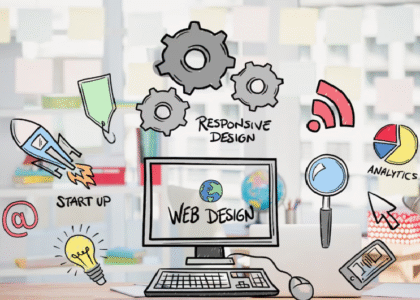Creating a captivating and easily navigable trademark is the foundation of any Android app. A good UI leads to traffic to the site and coherence as it offers satisfaction to the site’s users. As a result, this blog post is devoted to key know-how regarding the less pain, more gain UI in the context of Android apps and aims to embrace diverse aspects, from the necessity to comprehend the customers’ needs to the practical application of corresponding principles.

ADVERTISEMENT
Understanding User Needs and Preferences
- Conduct User Research
When it comes to designing, you need to know who your customers are, and an initial step to that would be knowing your target market. The ‘people’ discovery process outlines the users, what they want, and what they dislike. Ask them questions about how they behave and what they expect by using surveys, interviews and conducting usability testing.
- Create User Personas
For this purpose, use cases derived from your research findings should be used to develop user personas for your target audiences. These personas make it easier to create mental representations of the users and their needs, hence, the development of user interfaces that meet the needs of the users. When constructing the personas, it is proper to provide additional information, including age, nature of business, computer literacy, and objectives.
- Define User Scenarios
User scenarios are the detailed descriptions of how the users will engage with the application in different themes. This knowledge contributes to defining the context of use and the tasks which the users are trying to solve. Defining the user scenarios is a way to guarantee the interface of your app will help the user accomplish the goal.
ADVERTISEMENT
Implementing Effective Design Principles
- Consistency is Key
Design consistency simply means that the user interface should be standardized so that the users can be able to find and manipulate through the interface easily. Ensure the colours, fonts and the organisation style used on the home page remains consistent with the rest of the application. Stick to the Material Design interface as proposed by Google to make all the applications seen by android users feel familiar.
- Prioritise Usability
Accessibility is one of the factors that mainly define user interfaces’ friendliness and convenience in Android app development. Make your app easily navigable, and the buttons must be designed with Interactive Usability. They should be labelled and named as simply and clearly as possible and also have feedback on the user’s actions. Perform a usability assessment to determine the number of usability problems that exist.
- Focus on Accessibility
Accessibility is about making your app as usable as possible, irrespective of the user’s challenges. Specific standards should be practiced for the App to be user-friendly to those with special needs. Select clear contrast between the background colour and foreground content, give textual descriptions to images, and distinguish between interactive components. Make items like the screen reader and the ability to adjust the text to different sizes on the screen.
ADVERTISEMENT
Creating For Different Screen Widths And Heights
- Responsive Design
Android devices have different dimensions, differing in screen size and screen resolution. Apply responsive design techniques to achieve a proper look and functionality of your app on both devices. Employ precise and elastic layouts and images that can adapt to any size of Internet display. After developing the app, try it on different devices to ensure it will adequately run on all targeted settings.
- Adaptive Layouts
The layouts can be made adaptive so that the application interface switches according to the screen size and orientation. To create flexible layouts, ConstraintLayout, along with other layout managers, should be used to change the position of some of the UI elements. It is crucial to confirm that users receive a good experience of your application in both portrait and landscape orientations.
- Optimize for Tablets and Foldable Devices
Due to the current advancement in tablet and foldable device use, harnessing the larger screens these devices possess is crucial. If the screen size is larger, take advantage of multi-pane layouts and deliver more features. You must design your app layout to be seamless for all form factors associated with your project.
Testing and Iterating the Design
- Conduct Usability Testing
Usability testing is a process of witnessing users use an application to find areas that need to be changed. Finally, the interface design is brought to real end users for usability tests to assess their feelings towards the designed interfaces. Corrections to the feedback might be required from time to time for improvement.
- A/B Testing
By contrasting two design versions, then identifying which of them is better, the A/B testing idea is derived. See how your application UI is perceived by the audience, what are the elements that users focus on the most, and which layouts and features are ignored. Apply decision-making processes for improving the look and feel of the user interface based on the analysis of the results.
- Gather User Feedback
Conduct surveys to keep on collecting data on how users’ engage with your app. Try to use in-App surveys, feedback form and reviews to gather some information. From the interaction with the users, one must ensure they come up with new enhancements and modifications of the interface frequently.
ADVERTISEMENT
Conclusion
Work on the effective interfaces in Android applications is a complex process, which implies an understanding of the needs of users and the necessary approaches in the design of realistic applications and testing and optimization of the effective design. Hence, when designing interface, it is essential to focus on usability, consistency, and accessibility so the user can be offered the best experience. The issues that should always be considered are resizing for different screen sizes and orientations, as well as colourful and informative interface and user feedback to assess the usability and entertainment of the application. When applying the abovementioned rules, you can design particularly noteworthy Android applications capable of navigating customers to the extent that they keep coming back to utilise the created products in the future.
ADVERTISEMENT






